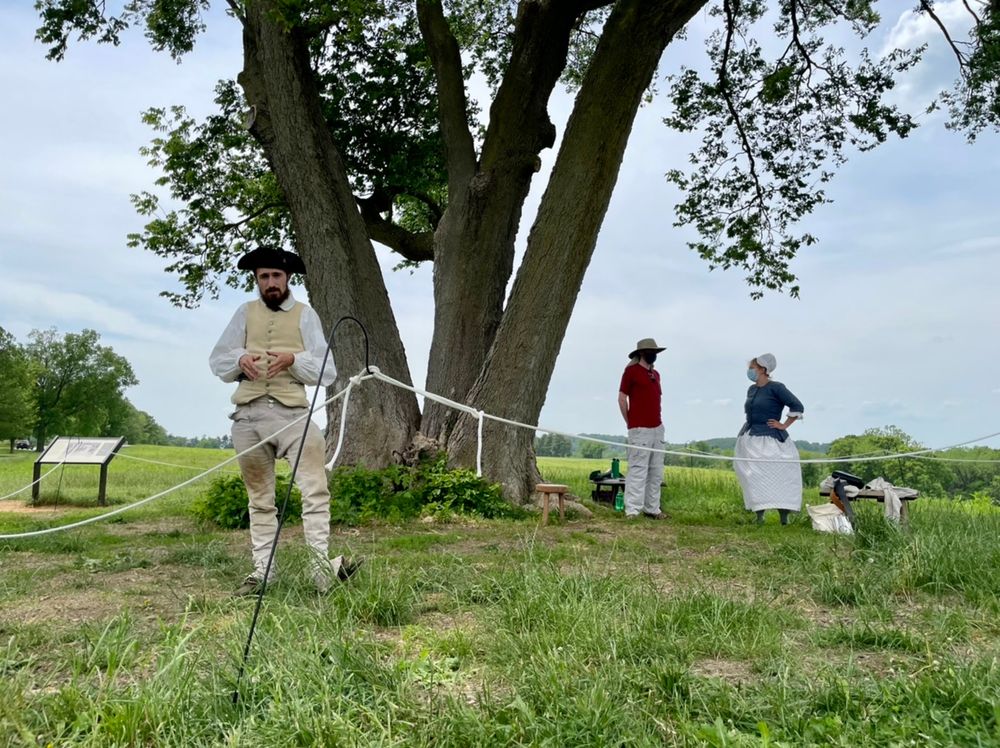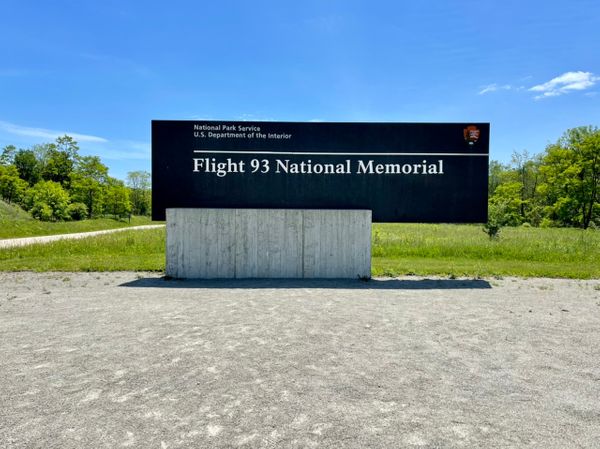Valley Forge National Historic Park: Ranger-led Program
Ranger Russell was doing programs in period costume every hour at the Muhlenberg Brigade stop on the Embankment Tour, which was great. We were the only people at the 2pm presentation when it started, but by the end there were four or five families, and some of the older kids had really great questions and had clearly seen Hamilton, the musical. So thank you, Lin Manuel Miranda and the fabulous performers, for getting kids interested in history!
In talking about how Washington needed to turn the soldiers at Valley Forge into a unified army from one that had different styles and allegiances to their individual states, the ranger made a useful analogy about playing sports. He asked the kids if they would like to have twelve different coaches for a soccer game. Can you imagine if one is saying to go here then another contradicts, or they say pass or shoot, and another says no, don't do that, go the other way. It would be very confusing. Everyone seemed to get that and be impressed by the discipline and unity the training and leadership at Valley Forge achieved. It really exemplifies the United States motto of E pluribus unum (Latin for “Out of Many, One”) which can be found on all our coins.
Another thing he mentioned that made an impression was that when the Battle of White Marsh was fought (December 5-8, 1977) right near Valley Forge, more than 100 soldiers (both sides) died from the cold and exposure before they even got to the battlefield. The costume he was wearing, while he was boiling in 90 degree weather, was clearly woefully inadequate for freezing temperatures. Ranger Beth was also present in period costume, but she was mostly involved by holding up the various articles of gear and clothing he was talking about so that we could see them better. They were behind a roped off area around a tree.
Russell also told us that the huts where we were at Muhlenberg, the cannons down Artillery Park, and much of the evidence of the encampment, are reconstructions. Because they are reconstructions, kids are allowed to climb on the cannons at Artillery Park, which is really fun and highly recommended. This is very different from, for example, Fort Pickens, where the cannons are authentic and have signs on them that they shouldn’t be touched, let alone climbed on.
After the army left Valley Forge, all evidence of the camp was torn down by the farmers. The army had really damaged the land in the area, cutting down trees to build huts and fires, taking supplies and farm animals from the people who lived nearby, and building outer line defenses, fortifications, trenches, and redoubts. Redoubt was a new word for me, so likely for most kids. The junior ranger book defines it as “an earthen fort which would be manned with infantry and artillery, creating strong points in the defense.” The cleared areas, thanks to all the rain and the sheer number of people tramping across it, were pretty much just mud when the soldiers left. Residents of the area tore down the 1500 huts to reclaim the wood, plowed the land, and were able to farm again (not in 1778, but by the summer of 1779). Washington’s headquarters, though, is mostly original, and predates the encampment, having been built in the 1740s.



